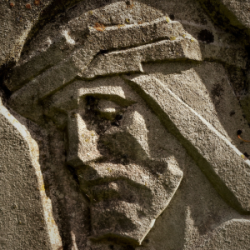Welcome readers! Please subscribe through the button on the right.
(Read this series from its beginning here.)

The first quote about Jael is from the story of Deborah, a prophetess and judge. In the book of Judges, Deborah tells Barak, a military commander, to assemble forces and battle Sisera, commander of the army of King Jabin of Canaan. Jabin “had cruelly oppressed the Israelites for twenty years” and “they [Israelites] cried to the LORD for help.” (Judges 4:3)
Barak tells Deborah that he will only go if she goes with him. She agrees, but replies, “because of the course you are taking, the honor will not be yours, for the LORD will deliver Sisera into the hands of a woman.” (Judges 4:9)
When Sisera escapes the battle, he flees on foot and hides in the tent of Jael, the wife of Heber. He mistakes Jael as a neutral party in the battle. Jael then seduces Sisera only to drive a stake through his temple while he sleeps. Jael ushers Barak in to behold the gruesome scene.
The song of Deborah memorializes this story:
Most blessed of women be Jael,
the wife of Heber the Kenite,
most blessed of tent-dwelling women.
He asked for water, and she gave him milk;
in a bowl fit for nobles she brought him curdled milk.
Her hand reached for the tent peg,
her right hand for the workman’s hammer.
She struck Sisera, she crushed his head,
she shattered and pierced his temple.
At her feet he sank,
he fell; there he lay.
At her feet he sank, he fell;
where he sank, there he fell—dead. (Judges 5:24-27)
This is a violent and bloody story of liberation from oppression by the hands of a woman. Medieval images of Jael often depict her as a prefiguration of Mary the mother of Jesus.
The second reference, from the deuterocanonical book of Judith, is found in the Septuagint. It tells the story of Judith, a courageous and beautiful Jewish widow. Judith uses her beauty and power of seduction to destroy the Assyrian general Holofernes and to liberate her people from oppression.
In Judith 10 we read:
“She removed the sackcloth she had been wearing, took off her widow’s garments, bathed her body with water, and anointed herself with precious ointment. She combed her hair, put on a tiara, and dressed herself in the festive attire that she used to wear while her husband Manasseh was living. She put sandals on her feet, and put on her anklets, bracelets, rings, earrings, and all her other jewelry. Thus she made herself very beautiful, to entice the eyes of all the men who might see her.” (Judith 10:3-4)
When Judith is captured by Holofernes’ patrol, she tells them, “I am a daughter of the Hebrews, but I am fleeing from them, for they are about to be handed over to you to be devoured. I am on my way to see Holofernes the commander of your army, to give him a true report; I will show him a way by which he can go and capture all the hill country without losing one of his men, captured or slain.” (10:12-13)
Her beauty distracts them, and they take her to Holofernes who hears her tale and welcomes her.
Her words pleased Holofernes and all his servants. They marveled at her wisdom and said, “No other woman from one end of the earth to the other looks so beautiful or speaks so wisely! . . . You are not only beautiful in appearance, but wise in speech.” (11:20-23)
Holofernes holds a private banquet and intends to have sex with Judith afterwards. She gets him so drunk that late in the night, while he’s passed out and she’s alone with him, Judith stands beside Holofernes’ bed and prays: “O Lord God of all might, look in this hour on the work of my hands for the exaltation of Jerusalem” (13:4). She then takes down Holofornes’ sword, which hung from his bed post, and decapitates him in two blows.
This is another violent, bloody story of liberation from oppression by the hands of a woman.
In this week’s reading from the gospel of Luke, we read of two more women. We’ll finish with these parallel narratives.
(Read Part 3)













